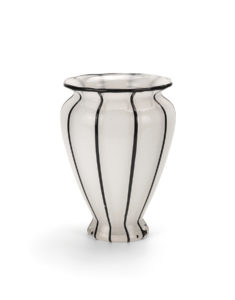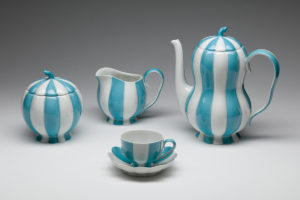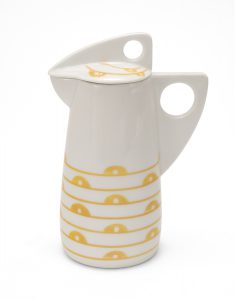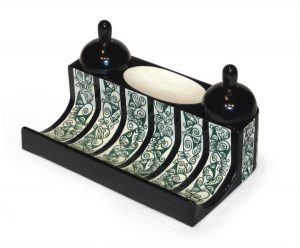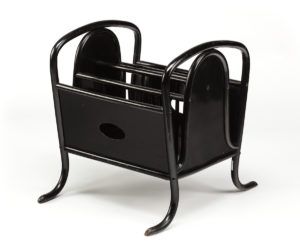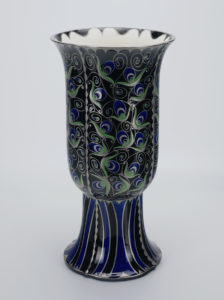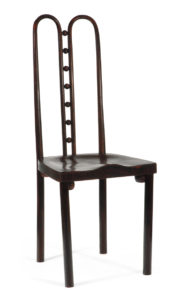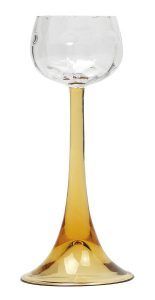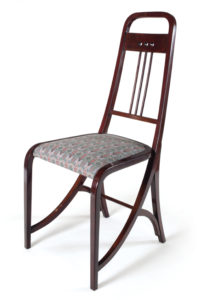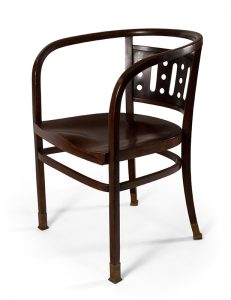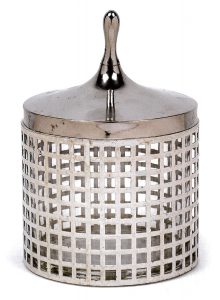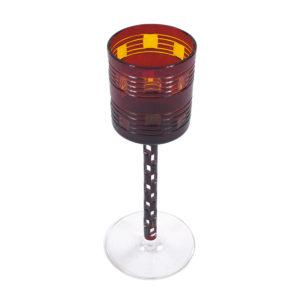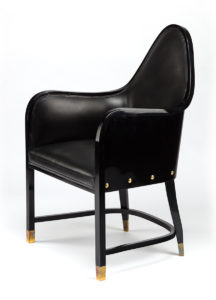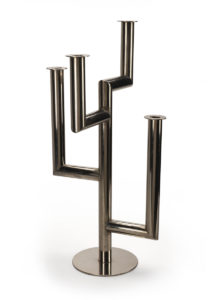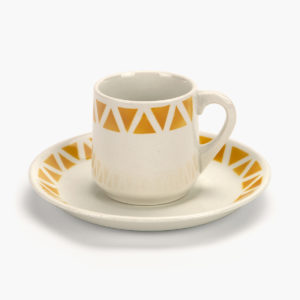Wiener Werkstätte (Viennese Workshops), 1903-1932
Another style and association of artists developed at almost the same time as Arts & Crafts and Art Nouveau, but had its own distinct character. The Wiener Werkstätte was founded by architect Josef Hoffmann and painter and designer Koloman Moser with the aim of promoting Austrian and particularly Viennese artworks. The works of Charles Mackintosh, Charles Ashbee and E. W. Godwin influenced the Wiener Werkstätte, and in particular Mackintosh influenced Hoffmann. In line with Arts & Crafts principles, the artists also strove to achieve total works of art or a Gesamtkunstwerk with their various disciplines. Visually, the style is often characterized by restrained geometric curves, square corners and duplicated linear patterns. Ornamentation tends to be repetitive, such as the curling lines or squares in a Gustav Klimt painting. Decoration is generally restrained and sometimes there is none. In addition to architectural projects, the designers created metalware, glassware, tableware, furniture, flatware, ceramics, textiles, fashion design, theater costumes, jewelry and graphics (lettering, posters, wallpapers, bookbinding, box designs and coverings and postcards). The Wiener Werkstätte disbanded because of financial instability due to the severe economic conditions in the world following the stock market crash of October 1929 in the United States.

